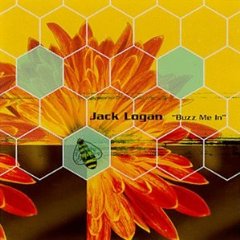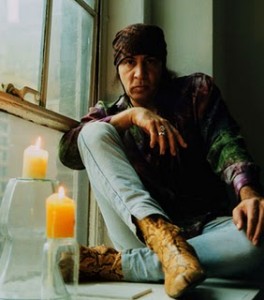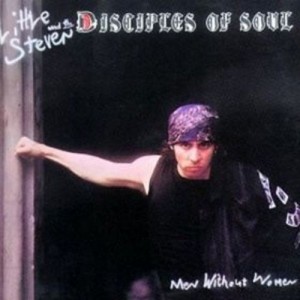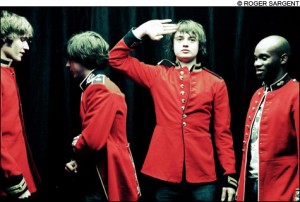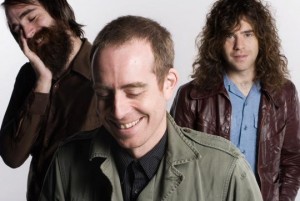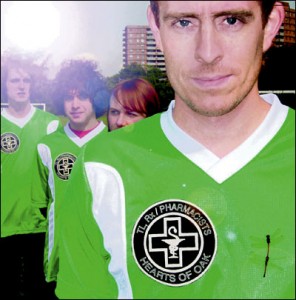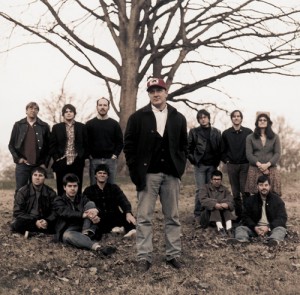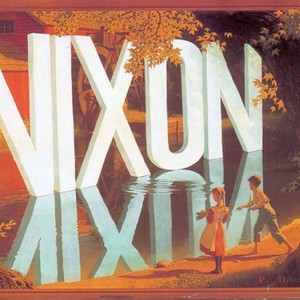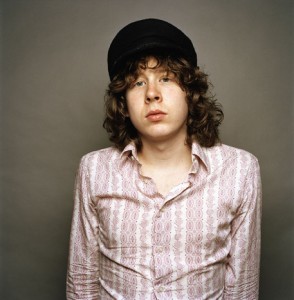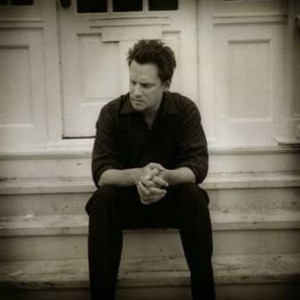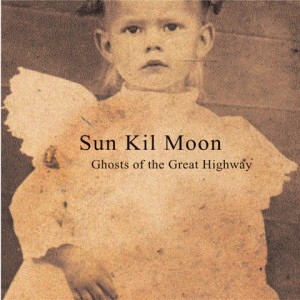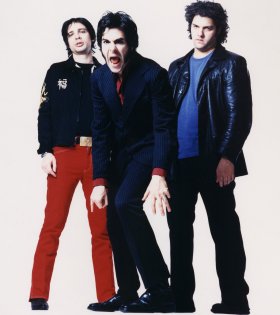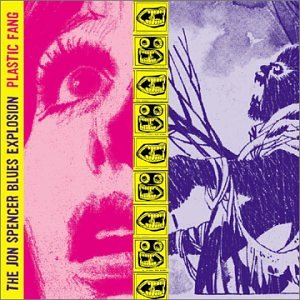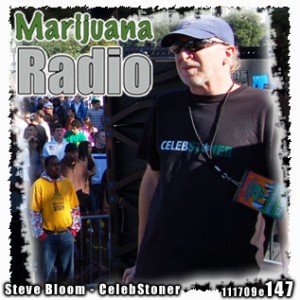 I first met Pot Culture author/ CelebStoner host Steve Bloom at, ironically enough, a 1st anniversary party for co-author Shirley Halperin’s now-defunct indie rag, Smug (one of my early writing gigs). It was a fortuitous night down in the Bowery at CB Gallery (an extension of illustrious dive, CBGB’s), since Bloom then hooked me up with High Times, the leading counterculture marijuana publication, a freelance job I’d only dreamt of. I took Bloom out for a bowl within minutes of meeting him, and my social life in the city, already topnotch, got elevated – more interviews with highlife celebs, better contacts, and softball with High Times’ infamous Bonghitters.
I first met Pot Culture author/ CelebStoner host Steve Bloom at, ironically enough, a 1st anniversary party for co-author Shirley Halperin’s now-defunct indie rag, Smug (one of my early writing gigs). It was a fortuitous night down in the Bowery at CB Gallery (an extension of illustrious dive, CBGB’s), since Bloom then hooked me up with High Times, the leading counterculture marijuana publication, a freelance job I’d only dreamt of. I took Bloom out for a bowl within minutes of meeting him, and my social life in the city, already topnotch, got elevated – more interviews with highlife celebs, better contacts, and softball with High Times’ infamous Bonghitters.
Alongside Bloom, Halperin, soon-to-be MTV editor Joe D’Angelo, and prominent photographer Dennis Kleiman, we essentially owned Roseland Ballroom at its indie rock height (‘93-’99), gathering at dozens of downtown shows, imbibing on-house drinks galore, smoking the best herb, and getting the freest tix. Halperin went on to prosper at Rolling Stone, US Weekly, and Enertainment Weekly, becoming a notarized celebrity hound frequently commentating for MTV, VH1, CNN, Fox, MSNBC, and E! I reminded her of a “long lost uncle.” She borrowed small amounts of cash, begged for late night rides back to Williamsburg, married renowned producer (and ex-Pernice Brothers bassist) Tom Monahan, moved to the Left Coast (boho hipster refuge, Silver Lake), and no doubt haunted Bloom to complete ‘joint’ endeavor, Pot Culture (Abrams Image). The tidy A to Z guide ‘to stoner language and life,’ readied for release April 20th (a.k.a. 4-20, the international time zone to toke up), is literally a Whole Earth catalog for fiendish weed demons and doobiously dawdling dabblers alike.
A fun read, Bloom and Halperin’s stony tome never directly snubs America’s antiquated marijuana laws, but indirectly encourages consenting adults to turn on, tune in, NOT drop out. Perhaps most easily palatable for skeptical dilettantes and casual readers are the purple-paged Pot Culture Picks, a nifty addendum encompassing favorite stoner movies, scenes, characters, and dialogue, plus druggy dramas, comedies, sci-fi, cartoons, slogans, and stony recipes –no to mention a handy section on best pot-influenced music!
Original onscreen stoner, Dennis Hopper (starring in summer of love flick, The Trip, and ‘69s preferred Easy Rider) is said to “embody the fear and loathing inside every pothead’s heart,” a re-contextualized phrase snatched from gonzo journalist Hunter S. Thompson’s exalted beat-styled treatise. Cheech & Chong are credited as the best pot comedic duo while Sean Penn’s Fast Times At Ridgemont High surfer dude and Carlito’s Way cocaine-inhaling mongrel afford him most famous solo pot act status.
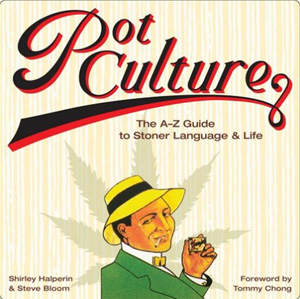 Pot Culture should convince all but the most abstinent person to strike down ridiculously strict laws governing the friendly weed. Better yet, vote out the deadwood clogging our log-jammed congressional system. Free the weed and the mass will follow. (Download Charlie Daniels’ outspoken libertarian rally “Long Haired Country Boy” here for proper musical affect).
Pot Culture should convince all but the most abstinent person to strike down ridiculously strict laws governing the friendly weed. Better yet, vote out the deadwood clogging our log-jammed congressional system. Free the weed and the mass will follow. (Download Charlie Daniels’ outspoken libertarian rally “Long Haired Country Boy” here for proper musical affect).
For the uninitiated, ‘pot’ unequivocally encourages and magnifies artistic ideas, enhancing all five senses. And let me add a vicious ‘fuck you!’ to wrongheaded androids denying marijuana medication to a bulky handcuffed populace. Only the most sober individual could validate an opinion against the cursed ‘evil weed’ since alcohol is dangerous while pot is, holy shit, probably not. Safer by a fuck-load than beer and wine, marijuana’s cautious harmlessness shames all legal drugs and habitual cigarettes. An unprocessed indigenous plant lacking negative long-term effects, marijuana guilelessly outshines alcohol, uppers, downers, nicotine, and recreational cocaine-heroin. Alcohol overdose kills 5,000 yearly while pot’s psychoactive intensification stimulates brain receptors and eschews toxins. Unlike alcohol, tobacco, and coke, its prenatal use does not, I insist, cause birth defects. So stuff that in your hashpipe during pregnancy!
As we indulge at former long-time High Times editor Steve Bloom’s spacious Brooklyn apartment, the Jewish redheaded Bronx-raised website publisher, movie reviewer, sports fan, Obama supporter, and conversational pot icon commences, “Pot Culture was Shirley’s idea. She lived in Jersey, went to Rutgers, started Smug, and came up with the stoner dictionary/ encyclopedia. While I was High Times editor in ’06, she contacted me and mentioned a proposal to collaborate on the book. She was still at Us Weekly. It’d been percolating in her mind since the ‘90s. Our combined experience as stoners – I represent the Baby Boomers, she reps the younger crowd – plus my professional experience as a marijuana journalist and her orientation with celebrities, combined for a tightly written Pot-o-pedia. We siphoned information and wanted an exciting book full of pictures like a magazine – full-page spreads, visual elements, and sidebars. My knowledge is deeper in marijuana history, science, and activism while Shirley takes on everyday stoners and how they speak and act.”
Before joining High Times in the early ‘90s, Bloom admits to being “a pretty average stoner oblivious to New York’s Washington Square Park rallies” and didn’t see himself as an activist. Coming up through the ranks, the future Central Park softball commish had broke into the biz writing for Downbeat, Soho Weekly, and Rolling Stone. He credits editors Jim Henke and Peter Occiograssi with giving him a break. Fortuitously, he enjoyed funk, soul, and disco, black music overshadowed by the ’77 punk explosion. He found his niche covering Kool & the Gang and Brothers Johnson (for $5) and kept the ball rolling. He interviewed James Brown for a Soho Weekly cover and became a lifetime friend of the Godfather of Soul. As video games took over local arcades, Bloom pitched an assignment then published his first book, Video Invaders. Music editor Henke allowed him to cover the coveted New Orleans Jazz Fest, Gladys Knight & the Pips, the Pretenders, and Eric Clapton.
“My peak piece for Rolling Stone was a feature on Wynton Marsalis. I was into the jazz scene and wrote for Downbeat early on. Wynton was a 19-year-old new on the scene. I pitched the story, called “Young Man With A Horn.” But I could never work my way into the Byzantine world of Village Voice. I didn’t like their stridently leftist view…and I’m a lefty,” he laughs.
Soon after, he got the gig that would define his bohemian lifestyle. As a High Times news editor, he became informed about the expanding marijuana community.
“High Times was fun because it was advocacy journalism. I believed in the marijuana cause and wanted to change people’s opinion on legalization. I stress in Pot Culture how we don’t use negatives. The government spends billions convincing people marijuana’s bad. I didn’t want to play into that. We didn’t refer to pot as a vice or ‘lesser evil.’ It’s the opposite – within reason. Nobody should sit on a couch watching t.v. all day toking and being inactive. That’s the stereotypical perception – passive apathetic people with no life ambition. Be open for discussion. Pot may cause bronchial problems but is it causing cancer? No. And the THC in pot inhibits the expansion of tumors,” he insists.
The loquacious Bloom acknowledges modern marijuana is much stronger than the ‘70s stuff he used to toke. He admits marijuana was condensed, flattened out, seedy, brown, and came overseas from exotic countries back then. There wasn’t radiant green marijuana with flecks of red, orange, and purple covered by snowy oozing resin. Truly, today’s beautifully delicious plants with grown-out buds are spectacular.
Bloom goes on to explain the disparity between indica and sativa strains.
“There’s a genetic difference between tall, tropical, spindly sativa, an energetic, uplifting strain, compared to indica, shorter, bushier, tighter nuggets – sleep-inducing mountainous weed from Pakistan that withstands harsher weather conditions.” He swoons, “Most marijuana’s a combination now. Pure sativa is haze, but it’s been crossed. Indica is generally Northern Lights. I like mostly skunky, fruit-flavored indica with full taste that won’t make you gasp for breath strength-wise, but has a deep flavor you’d get from a Cabernet Sauvignon red. I love the fullness on the palate of a good strong smoke, the fruity bouquet and the nice heavy pull into your lungs that has a thick impact. From the second you smoke it, you think, ‘That’s good stuff!’”
Dutifully, Pot Culture advocates proper smoking etiquette. Lighting the corner of a bowl instead of passing a scorched pipe is an obligatory nicety. Childproof lighters are a no-no. And while pot smoking isn’t a replacement for nausea-inducing chemotherapy, according to singer-guitarist Melissa Etheridge’s 2-page scoop, it’ll ease the recuperative pain. Bloom encourages readers to move around the book instead of going front-to-back. The index quickly guides readers to subject matter. While lengthily discussing the stoner album covers illustrated, Bloom cites David Peel’s ’68 mandate, Have A Marijuana, as the first to feature the ‘good herb.’
Then my fifty-something buddy leads me on a journey through marijuana’s dark, glorious past.
“The book has a wide spectrum of data, dating back to the ‘30s Reefer Madness era. Actor Robert Mitchum and musicians Louis Armstrong and Gene Krupa’s marijuana arrests may go unrecognized as celebrities who took hits for being busted and suffering for their right to smoke. There was no NORML for protest. Following Jazz, the Beat’s in the ‘50s embraced marijuana. The Beats were influenced by jazz. Jack Kerouac was into Charlie Parker and be-bop. They were into pot – and Benzedrine, because they liked the upside of things. That was cool daddy-o!” Bloom continues, “They were puffing, drinking, traveling. The Beats led to the hippies’ ‘60s psychedelic era. Ken Kesey was part of the new generation coming off the Beats. He and Timothy Leary were the next players addressing the drug issue broadly. Kesey on the West Coast and Leary on the East were the first to proselytize LSD.”
Though Pot Culture focuses on natural narcotics (marijuana/ hashish/ mushrooms/ peyote), chemically altered drugs such as LSD and ecstasy, relatively safe if used properly, are discreetly endorsed while dangerous anodynes such as cocaine and heroin are shunned. The deaths of musicians Jerry Garcia, Rick James, and Gram Parsons are related to hard drug abuse, but none are traced back to non-addictive substances such as weed, schrooms, or cacti. Even Pink Floyd acid casualty Syd Barrett is listed as dying from “natural causes,” forty years after getting tossed from his acclaimed prog-rock band. Rightfully, college heads laughed at stupid government-aided anti-marijuana movies such as Reefer Madness upon its ‘70s re-release. Hypocritically, during World War II, the government actually sponsored brief film, Hemp For Victory.
“Jack Herer, author of pro-hemp scrapbook, The Emperor Wears No Clothes, and fellow activist, Maria Faro, traveled around during the ‘90s, selling t-shirts and going to DC’s Library of Congress, digging up Hemp For Victory, a 15-minute short patriotically saluting ten foot high hemp plants waving in the wind. The government wanted hemp for rope, parachutes, and ships. It’s strong, durable, and benefited our overseas effort. It became popular when Reefer Madness gained a cult following. Interestingly, NORML founder Keith Stroup discovered Reefer Madness, brought and released it in the ‘70s. Herer suffered a stroke recently but nonetheless has an initiative to legalize marijuana in Santa Barbara. He no longer travels to campuses.” Bloom continues, “I took on college tours to educate students while at High Times, discussing pot’s use beyond recreationally, as an industrial plant used for paper and rope or for medicinal purposes. The seed could be used for soap, shampoo, food items.”
Happily, the ‘90s decade was a boon for marijuana subsequent to the conservative ‘80s. Though decriminalized in some states during the ‘70s, the ensuing ‘Just Say No’ Reagan era had put a temporary crimp on the pro-pot movement. Presently, there’s a rebirth of activism ratified by California’s Proposition 215, legalizing marijuana for medicinal use. In fact, there are several worthy stoner inventions recently unveiled.
Bloom chimes in. “Indoor growing allowed American cultivation to expand. Kind bud is a stoner innovation. Many innovations don’t come from big corporations. It’s done through grassroots underground efforts. Glass pipes, grinders, and vaporizers were invented by reliable stoners. But if marijuana were legal, there wouldn’t be the pursuit for, and accentuation on, indoor growing. It’d be made available in many ways.”
Thankfully, Bloom’s CelebStoner site parallels veritable godsend, Pot Culture. The beliefs and travails of pro-pot dignitaries such as Willie Nelson and Tommy Chong are interspersed with ‘toking gun’ pot-related news stories. Top Ten Celebstoners, January ’08, included Snoop Dogg (number one), Bill Maher, Matthew Mc Conaughey, Cameron Diaz, Jack Black, and Woody Harrelson. Approximately one hundred pot-friendly celebs were recently listed supporting different ’08 presidential candidates.
Though he regularly samples high quality marijuana, Bloom contends the stronger stuff will allow people to smoke less and lead healthier lives. Just don’t mistake Bloom for a pro-cigarette espouser, since the harmful legal smoke, unlike marijuana, poses extreme health risks “poisoning the system.”
He exhorts, “Cigarette smoking is a plague that must be eradicated. I’m offended by laws that prosecute marijuana users when there are 400,000 people a year dying from legal tobacco. It’s a foul habit. It’s rude to see half-smoked cigarettes in the gutter. It’s gross. You may not like marijuana, but it’s not a despicable habit turning lungs black or affecting people around you. I steer away from cigarette smokers when walking down the street. Do it privately. If you can’t smoke joints in the street, why are cigarettes o.k.”
 EAST BRUNSWICK HIGH GRAD FOREMOST BEHIND-THE-SCENES CELEBRITY EXPERT
EAST BRUNSWICK HIGH GRAD FOREMOST BEHIND-THE-SCENES CELEBRITY EXPERT
Shirley Halperin, a diligent Israeli-American with a hard-working reputation enjoys the high-pressure life of a celeb reporter. The respected entertainment editor graduated East Brunswick High School, attended Rutgers University, then had the unmitigated nerve to drop out with one semester left to start Smug Magazine, New York’s best alternative rock source from ’93 to ’97. It was a ballsy move that earned her immediate indie cred, and subsequently, through US Weekly and Enertainment Weekly, aboveground notoriety. She’s consistently done television commentary, lending lucid content to Bravo’s 100 Funniest Movies, Britney Spears True Hollywood Story, American Idol Untold, and soon-to-be-revealed Pussycat Dolls True Hollywood Story.
Obsessed with popular culture and an admitted t.v. junkie, Halperin originally poo-poo’d reality shows, but now loves them too. Four years at Us Weekly befriending Hollywood stars prepared Halperin for more mainstream coverage at EW. Yet beyond the faddish reporting and hyped-up documentaries, the persevering lass decided to go back to her subterranean roots by anthologizing marijuana fun facts for Pot Culture.
“I’d been working on the book before I took the EW job. They’ve been supportive. As a woman in the corporate world, it’s difficult enough to battle. Luckily, I’m strong and independent. Some find that intimidating. But I also smoke pot,” Halperin affably permits.
Keeping up with Hollywood gossip while preparing for Pot Culture exposure, the industrious author used her L.A. connections to amp up mod marijuana coverage.
“I did a Rob Thomas ‘In The Studio’ piece for Rolling Stone. Within ten minutes he pulled out a bong. We became friends and he was the first person I called for a celebrity essay. The stoner bond is very strong. Once you smoke with someone, you’ve got common ground. On a certain level, we could relate strictly because of that,” she shares. “Adrianne Curry from America’s Top Model, who’s married to Christopher Knight (a.k.a. Peter Brady), is a huge pot head. It’s rare to find visible female celebs volunteering information. She talked about the troubles she went through hiding weed stench. She was very open. Not every stoner’s a lazy slacker that’s crunchy, dreadlocked, and tie-dyed.”
Unlike tobacco-averse Bloom, Halperin is an on-again off-again cigarette smoker (though Bloom smirks at the off-again part). She admits smoking cigs is hard to stop and agrees marijuana may not be addictive.
“Quitting cigarettes is tough. They’re extremely harmful and have become a great tragedy I still struggle with,” Halperin confirms.
However, unlike Bloom and I, she’s wearily unsure of marijuana’s dissenting quandaries. “Pot hasn’t been studied long enough to know if there’s physical and mental dependence. Are the carcinogens damaging? Are there any proven cases of lung cancer due to pot smoking? I don’t think so.”
One of Halperin’s favorite marijuana strains, Sour Diesel, has become increasingly common out West, where growers have seemingly perfected the once-indigenous East Coast bud. She understands there’s different smoke for different folk.
In step with Bloom, Halperin concludes, “I’ve learned from California Medical Law that certain strains are better for certain people. Sativa is lighter and gives most people more energy whereas an indica strain like Kush could put you to sleep. Some patients may need to be sedated to cope while others want to be invigorated and animated. So picking the right strain is important. People should be able to medicate for both common and uncommon ailments.”
No argument here.
In the future, the enterprising authors hope to publish updated Pot Culture guides, since technological advances, innovative methodology, and newfound material need amended ascertainment. One glaring omission may’ve been the exclusion of High School Confidential, an audaciously forward-thinking ’58 film featuring West Side Story ’Jet’ Russ Tamblyn and platinum blonde hottie, Mamie Van Doren. Brought to my attention by Bloom, the legendary drama is loaded with much of the jargon modern stoners still utilize. A fascinatingly sympathetic morality play informed by James Dean’s rebellious Rebel Without A Cause flick, it disses heroin but leaves open the argument against marijuana as a gateway drug.
FOREWORD: Longwave may never move beyond underground praise, but they compete favorably against fellow mood-rock ambassadors Radiohead, Coldplay, Flaming Lips, and Mercury Rev. Formed in ’99, Longwave’s self-released debut, Endsongs, and a string of dates at tiny New York club, Luna Lounge, provided early exposure. Signed to major label, RCA, they were put on tour with more popular label mates, the Strokes. ‘05s introspectively melodic, There’s A Fire, and ‘08s straight-ahead pop endeavor, Secrets Are Sinister, expanded their audience a bit. This article originally appeared in Aquarian Weekly.
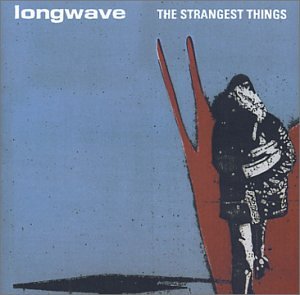 Originally from Rochester, Schlitz and soon-to-be Longwave drummer Mike James (formerly guitar and vocals) began local band Native Kin at age 14 and within a few years had opened shows for jam bands Moe and Screaming Cheetah Wheelies. When Schlitz moved to New York City in search of musicians, he met Queens-based bassist Dave Marchese through a bulletin board ad and then hooked up with Petuluma, California-bred guitarist Shannon Ferguson, who set up a recording studio for initial demos. Soon after, James moved from the rural confines of Rochester and came aboard.
Originally from Rochester, Schlitz and soon-to-be Longwave drummer Mike James (formerly guitar and vocals) began local band Native Kin at age 14 and within a few years had opened shows for jam bands Moe and Screaming Cheetah Wheelies. When Schlitz moved to New York City in search of musicians, he met Queens-based bassist Dave Marchese through a bulletin board ad and then hooked up with Petuluma, California-bred guitarist Shannon Ferguson, who set up a recording studio for initial demos. Soon after, James moved from the rural confines of Rochester and came aboard.
